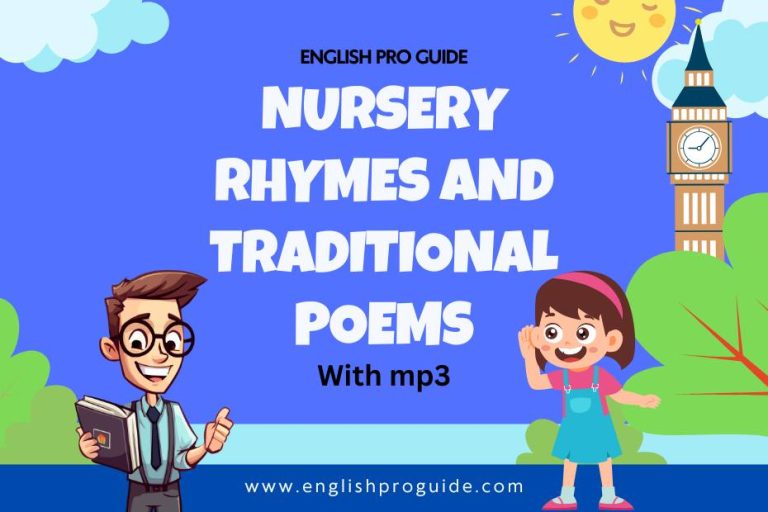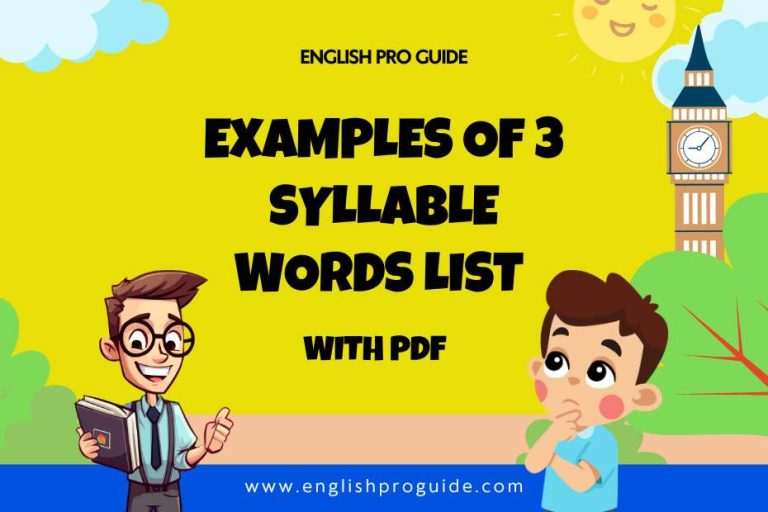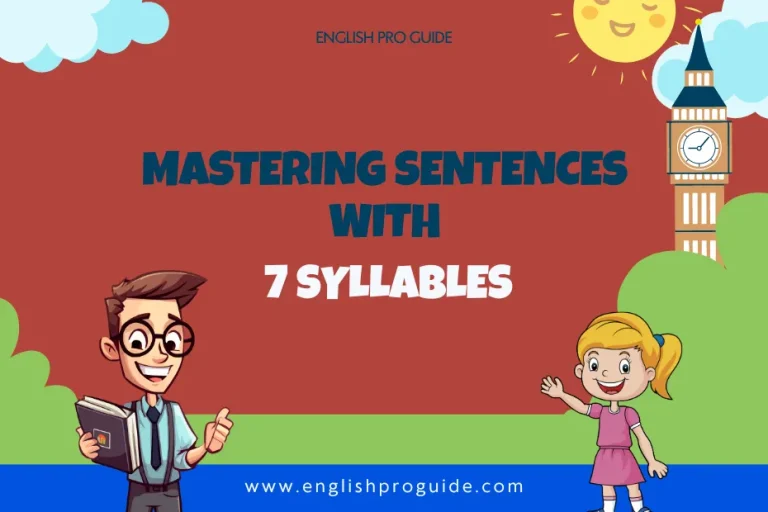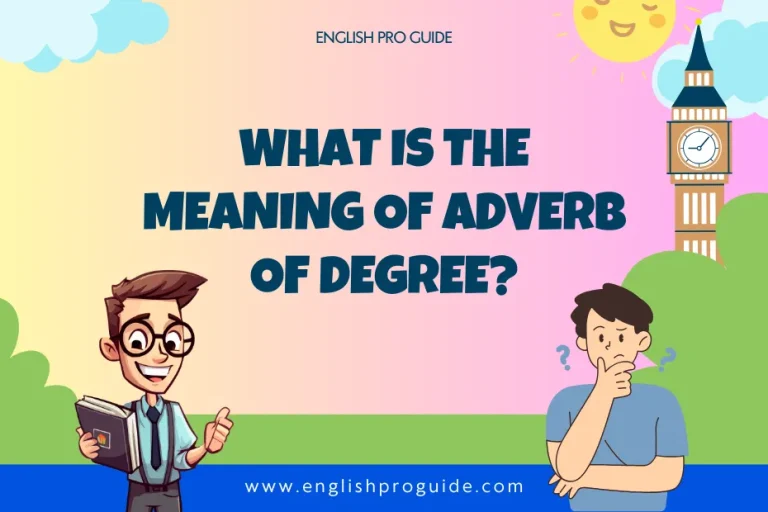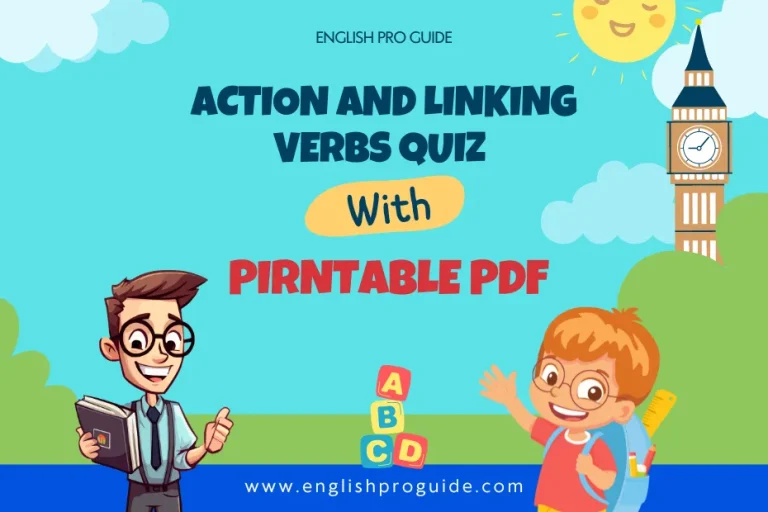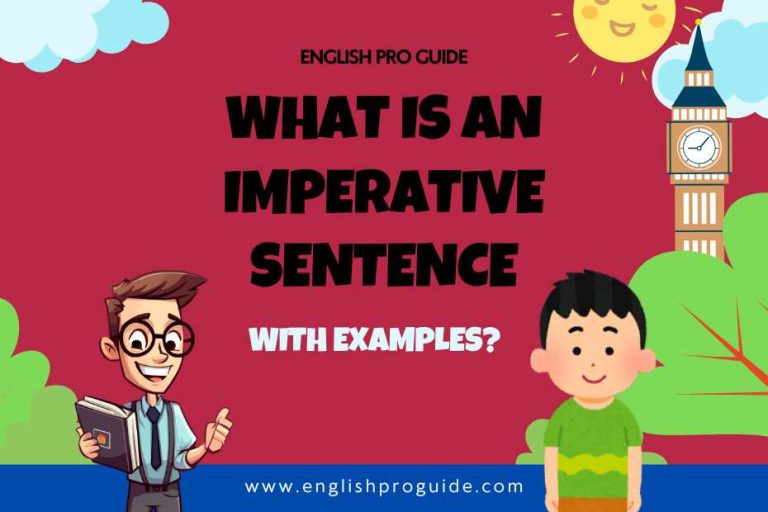Fun Examples of Rhyming Words Sentences for Kids & Toddlers
Rhymes make learning fun and can turn ordinary words into playful games. In this blog post, we’ll explore what rhyming words are, why they’re important, and how you can use them to help kids and toddlers grow their vocabulary.
What Are Rhyming Words Sentences
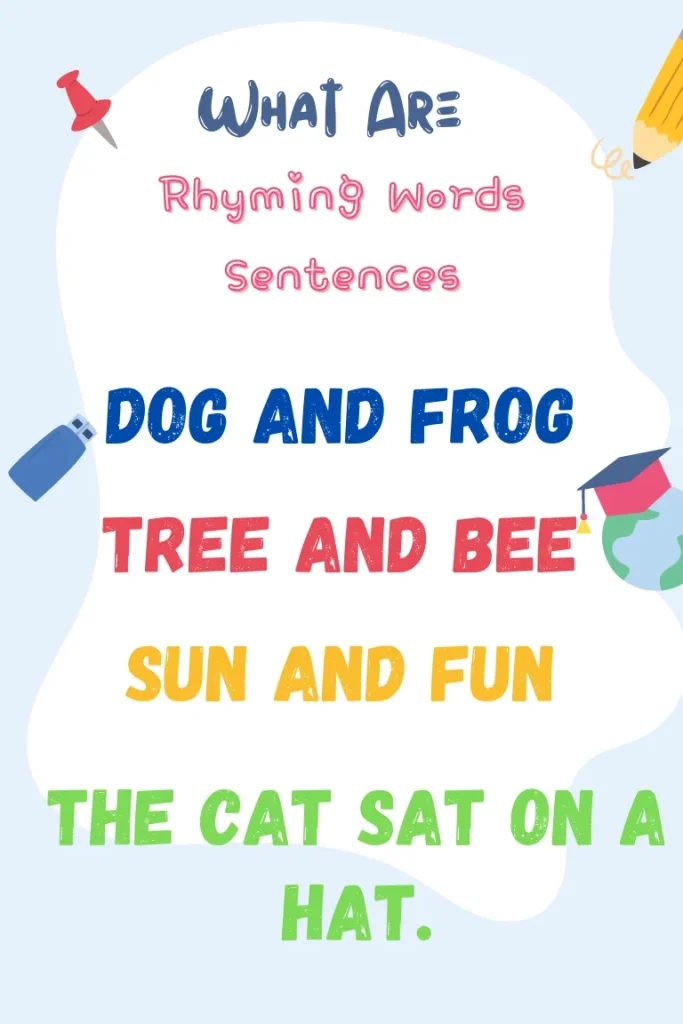
Rhyming words are words that have the same or similar ending sounds. For example, “cat” and “hat” rhyme because they both end in the “-at” sound. Here are a few more rhyming pairs:
- Dog and frog
- Tree and bee
- Sun and fun
When kids hear words that rhyme, they can begin to notice how sounds work together, which helps them understand patterns in language.
Why Are Rhyming Words Important for Kids?
Rhyming isn’t just fun, it plays an important role in early literacy and language development. Here’s why:
Improves Phonemic Awareness
Phonemic awareness is the ability to hear and identify sounds in words. Rhyming helps kids recognize patterns and understand how words are made up of different sounds. This is an important skill for learning to read.
Builds Vocabulary
When children learn rhyming words, they are exposed to new vocabulary. As they play with rhymes, they’ll start learning more words with similar sounds.
Boosts Memory and Focus
Rhyming words are easier to remember because they sound alike. This helps kids with memory retention and makes it easier for them to focus on learning.
Encourages Playful Learning
Rhyming is fun and can turn learning into a playful activity. When kids enjoy learning, they are more motivated to keep practicing.
Read More: Identify The Proper Noun With 100+ Examples And Quizzes
Fun Examples of Rhyming Words in Sentences
Here are some examples of rhyming sentences that will help kids recognize rhyming words:
- The cat sat on a hat.
- The sun is so much fun.
- I saw a bee in a tree.
- The dog jumped over a log.
- The little frog sat on a log.
- The mouse ran into the house.
- I found a star in a jar.
- The car was parked very far.
- My pet fish made a wish.
- The boy played with a toy.
Rhyming Word Lists for Kids
Here are some more rhyming words that you can use for practice:
- -at: Cat, bat, hat, mat, rat, sat
- -og: Dog, fog, log, frog, hog
- -all: Ball, call, fall, tall, wall
- -eep: Sleep, deep, keep, peep, sheep
- -ight: Light, night, bright, fight, tight
- -ake: Cake, lake, snake, bake, rake
- -an: Fan, pan, man, can, ran
Rhyming Word Songs for Toddlers
Singing songs is a fantastic way to introduce rhymes to toddlers. Here are a few songs that feature simple rhymes:
This song helps toddlers hear the rhyme in “stream” and “dream.”
Row, Row, Row Your Boat
“Row, row, row your boat, gently down the stream.
Merrily, merrily, merrily, merrily, life is but a dream.”
Down by the Bay
“Down by the bay, where the watermelons grow,
Back to my home, I dare not go,
For if I do, my mother will say,
Have you ever seen a goose kissing a moose?”
The Wheels on the Bus
- “The wheels on the bus go round and round,
All through the town.”
This song helps toddlers with simpler rhymes like “round” and “town.”
Tips for Parents and Teachers
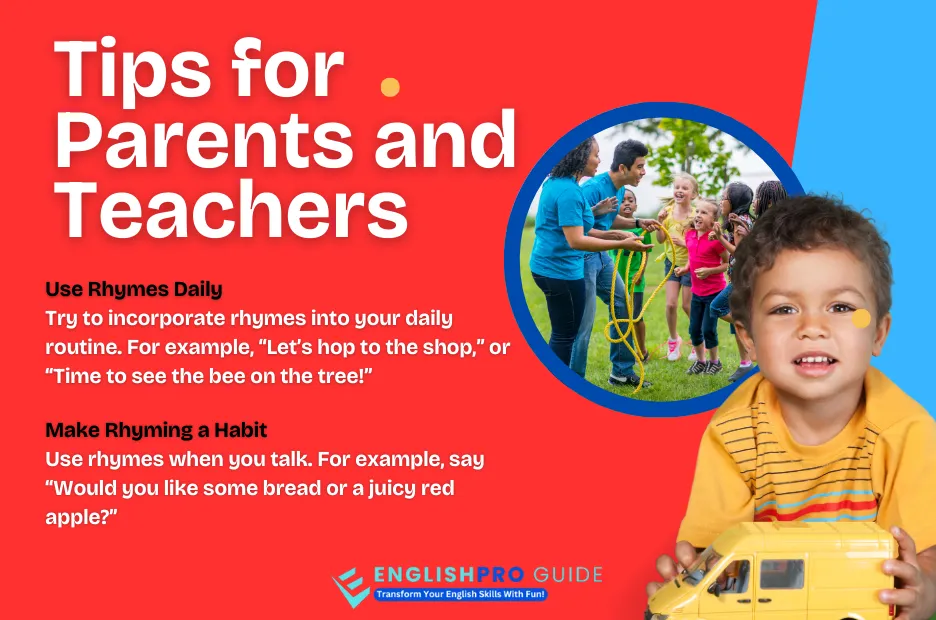
Use Rhymes Daily
Try to incorporate rhymes into your daily routine. For example, “Let’s hop to the shop,” or “Time to see the bee on the tree!”
Make Rhyming a Habit
Use rhymes when you talk. For example, say “Would you like some bread or a juicy red apple?”
Play Rhyming Games
Make car rides or waiting time fun with rhyming games. Start with a word and have your child say as many rhyming words as possible.
Repetition is Key
Kids learn through repetition. The more they hear rhymes, the better they will understand how sounds work together.
Read More: 10 Collective Nouns Quiz With Answers Tick The correct word
Conclusion
Rhyming words are a powerful tool for helping kids and toddlers learn language, improve their listening skills, and develop their memory.
Whether through reading, singing, or playing rhyming games, you can make learning fun and engaging for children. Keep practicing, and soon they’ll be creating their own silly rhymes in no time!

